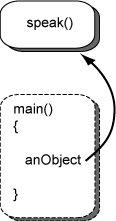No.
You need only one main() method for the
Java virtual machine to use in starting your program.
// HelloTester.java
//
class HelloObject
{
// method definition
public void speak()
{
System.out.println("Hello from an object!");
}
}
public class HelloTester
{
public static void main ( String[] args )
{
HelloObject anObject = new HelloObject();
anObject.speak();
}
}
C:\Source>javac HelloTester.java
C:\Source>java HelloTester
Hello from an object!
C:\Source>

Above is a complete program which includes two class definitions.
The definition of classHelloObject
includes a method but no instance variables, so
objects of class HelloObject have no instance variables.
The class does have a constructor but it is not
explicitly defined in the code
(this will be discussed further).
Class HelloTester contains only
the static main() method.
When the main() method starts, it constructs
a HelloObject and then invokes that object's speak() method.
The variable anObject is a reference variable that points to the newly created object.
If you are compiling and running Java from the command line,
both classes can be put into one file.
The name of the file must match the name of the class
that contains the main() method,
so this file must be named HelloObject.java.
The class that contains main() must use the public modifier.
For now, don't use any modifiers for the other classes.
Upper and lower case are important both
in the file name and in the class name.
If you are using an Integrated Development Environment (IDE) like BlueJ,
you may need to use separate files for each class.
With BlueJ you don't need a class to contain main().
You can run the HelloObject directly from the IDE.
You may need to experiment with your environment.